
DIGITAL NOMADS: A GREAT TEST CASE FOR LEADERS AND THE FUTURE OF WORK - Nick Jankel, Co-Founder, Switch On Leadership JUNE 2023 • Vol. 40 • No. 06 (ISSN 2562-0711) 14 09 23 29 New Data Reveals The Best Places To Be A Digital Nomad In 2023 - Lucinda Pullinger, The Instant Group Are Digital Nomads The Road To The Future? - Jason Richmond, Ideal Outcomes, Inc. Digital Nomadism In The Workplace: Top Insights From HR Leaders On Policies And Perspectives - Brett Farmiloe, Terkel.io Embracing The Digital Nomad Lifestyle: A Business Game-Changer - Mike Fata, Fata & Associates Themed Edition on The Rise of Digital Nomads
JUNE
On the Cover Articles
11 Workations: The Future Of Remote Work And
Vacation Combined
The transformative power of workations in the new era of digital nomads

- Fiona Passantino, Leadership coach, speaker, trainer and author, Post-Covid Handbooks
20 Driving Business Success Through Servant
Leadership
Create a positive and collaborative work environment through servant leadership
- Khushman Hans, Senior Director of Operations, Chewy
Digital Nomads: A Great Test Case For Leaders And
A reimagined rights and responsibilities equation is vital for integrating remote workers into organizations effectively
- Nick Jankel, Co-Founder, Switch On Leadership
26 Six Ways HR Can Build Workplace Trust
Why it’s important
- Jennie Yang, VP, People & Culture, 15Five
34 How Leaders Kill Employee Trustworthiness
Unveiling the connection between trustworthiness and trust in the workplace
- Yoram Solomon, Ph.D., Founder, Innovation Culture Institute™ LLC
The Future Of Work
06 INDEX
Leadership Excellence
2023 Vol.40 No.06 (ISSN 2562-0711)
Themed Edition on The Rise of Digital Nomads
Embracing The Digital Nomad Lifestyle: A Business GameChanger

Unleashing entrepreneurial success in a borderless world
- Mike Fata, Chief Executive Officer, Fata & Associates
New Data Reveals The Best Places To Be A Digital Nomad In 2023


Affordable, connected, and adventure-filled cities to work and explore
- Lucinda Pullinger, Managing Director UK, The Instant Group
Are Digital Nomads The Road To The Future?
Here is why you need to pay attention to this growing trend
- Jason Richmond, CEO and Chief Culture Officer, Ideal Outcomes, Inc.
23 29
Digital Nomadism In The Workplace: Top Insights From HR Leaders On Policies And Perspectives

Unleashing the power of location independence
- Brett Farmiloe, Founder and CEO, Terkel.io
INDEX Top Picks 09 14
Editorial Purpose
Our mission is to promote personal and professional development based on constructive values, sound ethics, and timeless principles.
Excellence Publications
Debbie McGrath CEO, HR.com - Publisher
Sue Kelley Director (Product, Marketing, and Research)
Babitha Balakrishnan and Deepa Damodaran Excellence Publications Managers and Editors
Leadership Excellence Team
Babitha Balakrishnan Editor
Arun Kumar R Design and Layout (Digital Magazine)
Chandra Shekar A K Magazine (Online Version)
Submissions & Correspondence
Please send any correspondence, articles, letters to the editor, and requests to reprint, republish, or excerpt articles to ePubEditors@hr.com
For customer service, or information on products and services, call 1-877-472-6648 Leadership
 Debbie Mcgrath Publisher, HR.com
Babitha Balakrishnan Editor, Leadership Excellence
Debbie Mcgrath Publisher, HR.com
Babitha Balakrishnan Editor, Leadership Excellence

Harnessing the Power of Digital Nomads in the Future of Work
Are your employees on the road again?
In a world where work and adventure collide, a new breed of professionals is rewriting the rules. They are the digital nomads, pioneers of a transformative movement that is reshaping the future of work as we know it.
Gone are the days of being tethered to a desk or confined within the walls of a traditional office. From sun-soaked beaches to bustling metropolises, the digital nomads redefine the notion of a workplace, blurring the boundaries between professional commitments and personal fulfillment.
However, the nomadic lifestyle also brings unique challenges, from managing time zones and maintaining work-life balance to navigating legal and logistical hurdles. Governments, businesses, and individuals must collaborate and adapt to create an ecosystem that embraces this unstoppable wave of change.
The June edition of Leadership Excellence includes informative articles on digital nomad trends, the best places to be a digital nomad, policies, perspectives, and much more.
In his article, Digital Nomads: A Great Test Case For Leaders And The Future Of Work, Nick Jankel (Co-Founder, Switch On Leadership) shares the complex dynamics of employing digital nomads in the future of work. Learn how HR managers and leaders can empower themselves to effectively support employees that work from anywhere, creating a fluid workforce of the future.
Lucinda Pullinger's (Managing Director UK, The Instant Group) article, New Data Reveals
The Best Places To Be A Digital Nomad
In 2023, ranks the top locations for digital nomads based on affordability, weather, and connectivity. The trend reflects the growing demand for workplace flexibility and the rise of remote work.
Jason Richmond's (CEO and Chief Culture Officer, Ideal Outcomes, Inc.) article, Are Digital Nomads The Road To The Future?, highlights the growing trend of employees who travel while working from anywhere, the benefits experienced, and the need for employers to adopt policies and prioritize cybersecurity to support this evolving workforce.
How are companies handling the growing trend of digital nomadism? Check out eight perspectives shared by CEOs, HR managers, and founders on their company’s approach to digital nomad employees in Brett Farmiloe's (CEO/ CHRO, Terkel.io) article, Digital Nomadism In The Workplace: Top Insights From HR Leaders On Policies And Perspectives.
In brief, if you are finding more and more employees on the road again, embrace it! They are poised to revolutionize the way we live, work, and explore.
We hope you find the latest edition of Leadership Excellence useful and informative in your leadership journey. Your feedback and suggestions on our articles are always welcome.
Happy Reading!
information, or opinions expressed in the Excellence ePublications are solely those of the authors and do not necessarily represent those of HR.com and its employees. Under
circumstances shall HR.com or its partners or affiliates be responsible
indirect
incidental damages arising out of these opinions and content.
Disclaimer: The views,
no
or liable for any
or
EDITOR’S NOTE
Subscribe now for $99 / year And get this magazine delivered to your inbox every month Become a Member Today to get it FREE! SIGN UP OR
Advertising Opportunities,
sales@hr.com Copyright © 2023 HR.com. No part of this publication may be reproduced or transmitted in any form without written
For
email:
permission from the publisher. Quotations must be credited.
is published monthly by HR.com Limited, 56
Road,
to the Editor at ePubEditors@hr.com
Excellence (ISSN 2562-0711)
Malone
Jacksons Point, Ontario L0E 1L0 Internet Address: www.hr.com Write
In a world of unparalleled challenges (global pandemic, racial injustice, political rivalry, digital 4.0, emotional malaise), uncertainty reigns. Finding opportunity in this context requires harnessing uncertainty and harnessing starts with reliable, valid, timely, and useful information. The Excellence publications are a superb source of such information. The authors provide insights with impact that will guide thought and action.
Dave Ulrich
Rensis Likert Professor, Ross School of Business, University of MichiganPartner, The RBL Group


Excellence publications are my ‘go-to’ resource for contemporary and actionable information to improve leadership, engagement, results, and retention. Each edition offers rich and diverse perspectives for improving the employee experience and the workplace in general.



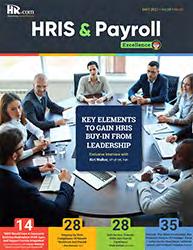
 Julie Winkle
Julie Winkle


I regularly read and contribute to Leadership Excellence and Talent Management Excellence. I use many of the articles I read to augment my own presentations and I often share the articles with my clients. They are always quick, right on target for the latest issues in my field, and appreciated by my clients. If you want to stay up to date on the latest HR trends, choose a few of the different issues from the Excellence series of publications.
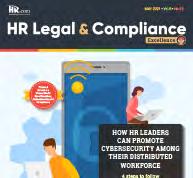


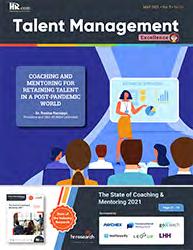
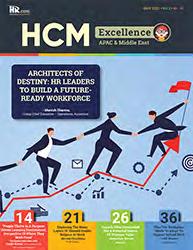
We’re eager to hear your feedback on our magazines. Let us know your thoughts at ePubEditors@hr.com
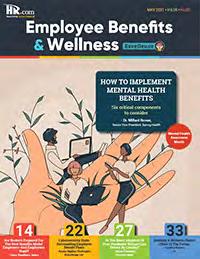

WHY EXCELLENCE PUBLICATIONS?
Giulioni Author, Virtual /Live Keynote Presenter, Inc.’s Top 100 Leadership Speakers
Dr. Beverly Kaye CEO, BevKaye&Co.
Digital Nomads: A Great Test Case For Leaders And The Future Of Work
By Nick Jankel, Switch On Leadership
Whatto do about employing digital nomads (DNs) is a perfect test case for the challenges that come with getting the Future of Work right — neither too revolutionary nor too staid. It’s a tough middle path that needs to be walked, but it’s one that, whether you welcome DNs or not, all organizations must eventually stride.
While there are growing numbers of people who identify as Digital Nomads (10-15 million in the US alone, and rising), the term encompasses a broad spectrum of types. What works for some is unlikely to work for others. Some DNs will be genuinely seeking to contribute to a company or organization while living their choice of lifestyle. Others will be playing employers for fools,
effectively aiming to get paid while doing yoga or hanging out at festivals.
Genuine DNs are the greatest test case for employers seeking to design a compelling Future of Work because they are an extreme version of the emerging demands that most Gen Y, and increasingly Gen Z, workers place on their employers. These demands are likely to grow across the generations.
The emerging Future of Work brings with it many challenges for employers and employees alike. How organizations (especially senior leaders, HR functions, and people managers) respond tells one a lot about the trajectory an organization is on, and how future-positive they really are. It determines, for instance, how able they will be to recruit and keep the most transformational talent,
and to unlock the creativity and innovation potential of their entire workforce.
At Switch On Leadership, we help companies develop an employee “proposition,” working culture and Future of Work driven to meet as many of what we call the “4Ms” as possible. When all 4Ms are working, employees feel seen, heard, valued, respected, and supported which keeps them motivated and engaged. There are many tales of Millennials and Gen Z workers who leave a job, or refuse a job offer because it doesn’t deliver on even half the 4Ms.
We define the 4Ms as meaning, mastery, membership, and majesty. The 5th M is money, but that is more a hygiene factor that can flex if the other 4Ms are present.
Leadership Excellence presented by HR.com JUNE 2023 6 Submit Your Articles
A reimagined rights and responsibilities equation is vital for integrating remote workers into organizations
COVER ARTICLE
Meaning: The organization has a genuine purpose — a compelling service to society and/or the planet — and is on an authentic journey to live that purpose. In addition, it means that each role is thoughtfully framed as meaningful and valuable.
Mastery: Rather than disempowering, fake delegating, and hierarchical cultures, people managers and senior leaders believe in the potential of their staff, and go out of the way to give them agency and autonomy (within boundaries).
Membership: There is a sense of care, safety and belonging in the workplace and team — without having to salute the flag or be part of a cult.
Majesty: People are afforded dignity and are regularly honored for effort as well as outcomes. Thoughtful care is taken to ensure workers can build their well-being and resilience so they don’t get overwhelmed or burned out.
Digital Nomads offer employers, and the people managers that must work with them every day, a tempting proposition: They are already future-positive in many ways.
These are people who already have some degree of agency and empowerment (mastery), enough to choose an unusual lifestyle. They are also more likely to know that they must take a large deal of responsibility for making it work on their terms.
They may have a sense of purpose that ties them to their choice to travel or to live abroad — perhaps to volunteer, to learn a language or be changed by a culture, perhaps to develop other parts of themselves (meaning).
They are more likely to be resilient and energized as they are choosing how and where to work, and so less likely to get stressed and lose performance (majesty). They may face challenges regarding genuine belonging (membership) in the organization, although they may get that M met in their community of choice.
In spite of these advantages, there are some major issues leaders, and HR functions, need to consider. These are also true of hybrid workers, but with the reality that some DNs will never come to the office and may have a +/-12 time difference, they are particularly acute.
This means that the “working alliance” between employer and employee needs to be finely tuned. This agreement needs to be discussed in detail, likely issues talked about and pre-empted by both parties, and solutions put in place so that breakdowns can be diagnosed quickly and addressed without resistance.
Everyone must be clear that with great rights (to travel, to work nomadically, to be a virtual team member permanently) come great responsibilities. We like to reframe these as “gifts” and “cares.” The gift is, dear employee, that you get
to live your #bestlife while working for us. But you also need to step up with your level of responsibility for your duties and “cares.” These are important things to do for the greater good — not just because you are paid, but because you care.
Many people believe they can step up, but may need support to do so. The organization should design support structures that will create the best conditions for responsibility taking on this level, just as parents need to set up boundaries and structures for kids as they get older so they can take on more duties without leaving them flailing.
Digital nomads aside, organizations should be thinking about all this anyway, as it’s the only way to transition from disempowerment and “learned helplessness” to the hybrid and distributed learning and leadership of the future.
However, a word to the wise: a growing body of research shows that for some employee types, including POC and younger women (and I imagine also quieter, more internal people), being away from the office affords them fewer opportunities to be supported, seen, and coached through issues. They may then fade, flail, and fail. This means people managers and HR folk must identify which DN or remote worker is likely to need more guard rails, more (digital) face time, and more exposure to the organization.
Leadership Excellence presented by HR.com JUNE 2023 7 Submit Your Articles Digital Nomads: A Great Test Case For Leaders And The Future Of Work
Here are some questions and ideas to help:
● What technologies and structures can be put in place to support and include people of diverse types?
● How can accountability and autonomy be encouraged? How can trust be facilitated (on both sides)?
● How can sharing ideas and co-creation be meaningfully unlocked (e.g. permanent Miro boards, asynchronous
Whatsapp/Slack voice notes, etc.)?
● How can people’s work be monitored and/ or challenged in a safe way without making assumptions or taking people only on their word?
● For instance, setting up “pods” or “squads” between DNs, or with DNs and in-person staff.
● How is growth and learning facilitated? Water cooler moments vs. fake
engineered sociality? Useful banter vs. time-wasting?
● How can you cultivate a real yet appropriate sense of belonging (membership) given some DNs might be 5000 miles away?
How do HR managers and leaders themselves need to be supported and empowered —practically and psychologically — to support DNs and remote workers effectively?
Begin by making sense of the rights and responsibilities equation. Define what are the organization’s benefits and “gifts” — a diverse workforce, fresh thinking, the most creative and excited talent, energized and resilient employees — and how the organization can best deliver on its duties and cares.

Then managers can help Digital Nomads and remote workers make sense of their own rights and responsibilities equation and become part of a fluid workforce of the future.

With over 25 years of hard-won experience advising ambitious leaders and organizations on the front lines of disruption, Nick Jankel is one of the world’s pre-eminent theorists and practitioners of transformational leadership and breakthrough innovation. He has worked with over 100,000 leaders in organizations like Google, Pfizer, Nike, PlayStation, and LEGO; and has designed and led breakthrough innovation projects for companies like Disney, Microsoft, Diageo, and Lendlease. Nick is the co-founder of Switch On Leadership and the lead developer of Bio-Transformation®. He is a world-renowned keynote speaker and futurist who has taught at Yale and Oxford and has coached celebrities and addicts on two international TV shows (BBC and MTV). He is the originator of the Selfto-System™ leadership method and the latest of his six authored books was featured on the cover of Publishers’ Weekly and won a global award.
Would you like to comment?
Leadership Excellence presented by HR.com JUNE 2023 8 Submit Your Articles
Digital Nomads: A Great Test Case For Leaders And The Future Of Work
Embracing The Digital Nomad Lifestyle: A Business Game-Changer
Unleashing entrepreneurial success in a borderless world
By Mike Fata, Fata & Associates
Asa 25-year veteran entrepreneur who has journeyed through myriad physical and professional landscapes, I’ve uncovered the transformative power of the digital nomad lifestyle in propelling my business ventures. In the past, business was restricted by geographical barriers. Today, the world is our playground.
The advent of the digital age has revolutionized how we conduct business. One compelling manifestation of this revolution is the digital nomad lifestyle - the ability to work remotely from anywhere in the world This lifestyle not only offers personal freedom and adventure but also presents unique opportunities for business growth and innovation.
The crux of the digital nomad lifestyle lies in leveraging location independence to maximize productivity, creativity, and overall business success. Here’s why entrepreneurs should consider adopting this lifestyle:
1. Access to Global Talent
The digital nomad lifestyle eliminates geographical limitations. You can hire the best talent from across the globe, fostering a diverse and innovative team that brings together an array of skills, perspectives, and experiences.
2. Enhanced Creativity and Innovation
Exposure to different cultures, environments, and experiences can stimulate creativity and innovation. This infusion of new ideas and fresh perspectives can be invaluable for business growth and competitive edge.
3. Cost Efficiency
By operating remotely, businesses can significantly reduce overhead costs associated with maintaining a physical office. These savings can then be channeled toward other areas of the business, such as marketing, product development, or team member benefits.
4. Increased Productivity
Numerous studies suggest that remote workers are often more productive than their office-bound counterparts. The flexibility to create a personalized work environment and schedule can lead to higher job satisfaction and productivity levels.
5. Resilience and Adaptability
The digital nomad lifestyle inherently develops resilience and adaptability - valuable traits in the fast-paced and ever-evolving business world.
Leadership Excellence presented by HR.com JUNE 2023 9 Submit Your Articles
TOP PICK
Having personally embarked on the digital nomad journey, I’ve found this lifestyle to be a vital catalyst in my entrepreneurial success.
From a personal standpoint, my entrepreneurial journey as a digital nomad truly began with my laptop, a vision, and an idyllic beach in Thailand. The dynamism of my surroundings, the diversity of people I met, and the expansive thinking space allowed by my nomadic lifestyle all contributed to a fresh business concept. The ability to hire talented individuals, irrespective of location, became a key part of my business strategy and growth.
The digital nomad lifestyle has not just been about work, though. It has opened up a world of opportunity for my family as well. In this interconnected, digital
era, homeschooling or world schooling has become a viable option, turning travel experiences into a learning opportunity for my children. They have been able to learn languages, history, and culture first-hand, providing them with an education that goes beyond textbooks. This lifestyle has fostered their adaptability, resilience, and global mindset - skills that are increasingly essential in today’s world.
Further, the cost savings of operating remotely have been substantial. By eliminating the need for a physical office, I reinvested these savings into my business and lifestyle, accelerating growth. Simultaneously, the global reach of my digital presence has been instrumental in driving customer acquisition and revenue growth.
The digital nomad lifestyle has also greatly influenced my productivity levels. With the freedom to align my work schedule with my peak productivity hours, I have found myself accomplishing more in less time.

The flexibility and adaptability ingrained in the digital nomad lifestyle have been invaluable. These traits, honed by continuously adapting to new environments and cultures, have equipped me to better navigate the ever-changing landscape of life and entrepreneurship.
The digital nomad lifestyle is not merely a buzzword; it’s a powerful tool for modern entrepreneurs. It offers a harmonious blend of personal freedom, professional growth, and family enrichment. As our world continues to evolve digitally, the advantages of being a digital nomad will only amplify, presenting an enticing prospect for many entrepreneurs and their families.
Would you like to comment?

Leadership Excellence presented by HR.com JUNE 2023 10 Submit Your Articles Embracing The Digital Nomad Lifestyle: A Business Game-Changer
Mike Fata is the Chief Executive Officer of Fata & Associates and the author of Grow: 12 Unconventional Lessons for Becoming an Unstoppable Entrepreneur . As a 9-figure entrepreneur, certified holistic health coach, and growth coach, he motivates and inspires people to discover their authentic business passions and live their best life every day.
Workations: The Future Of Remote Work And Vacation Combined

The transformative power of workations in the new era of digital nomads
By Fiona Passantino, Post-Covid Handbooks
Atrueworkation is a working vacation; leaving one’s city or country for a week or longer. Getting a true change of scenery. Logging in and working fully remotely using the video conferencing and visual collaboration tools that the pandemic brought us. With Covid behind us, the workation is here to stay into the future.
What’s a “Workation”?
It was bound to happen: the Workation. Even during the height of Covid lockdowns, now a distant memory, travel was still possible.
Most companies have extended work-at-home measures in some form today. The urge to get away from home and endless video calls, visit friends and family in faraway places, and escape for a change of scenery is hard to ignore.
With fast wifi everywhere you go, traveling to another place to log in and work is an obvious way to stay ahead of the burnout curve and become inspired and engaged again.
A true workation is a working vacation; leaving one’s city or country for a week or longer, and working fully remotely using the video conferencing and visual collaboration tools we now use every day.1
The Facts
About 56% of us can technically be Digital Nomads; we have jobs that can be fully executed remotely with no discernable change in productivity.2 At the same time, the war for talent is only heating up. The Great Resignation is still with us, and employers are still trying to find ways to boost morale and attract workers.
Leadership Excellence presented by HR.com JUNE 2023 11 Submit Your Articles
Workations are so popular with Digital Nomad professionals that it’s already a selling point in the interview process; 85% of workers under forty want increased flexibility in a job, which includes borderless mobility.3
Protection from “Interruption Culture”
Workations are about “running to”; most work that demands creativity and out-of-the-box thinking improves with a new perspective, a change of backdrop, and sensory stimulation. 4 Creative workers can find inspiration, be exposed to new solutions and skills as well as have access to new markets and networking opportunities.
Workations are also about “running from”; the physical office and the home environment are all about constant interruptions, unplanned interactions, last-minute new tasks, and mini-projects that come with face time. These interruptions don’t replace planned tasks and deadlines but add to them.
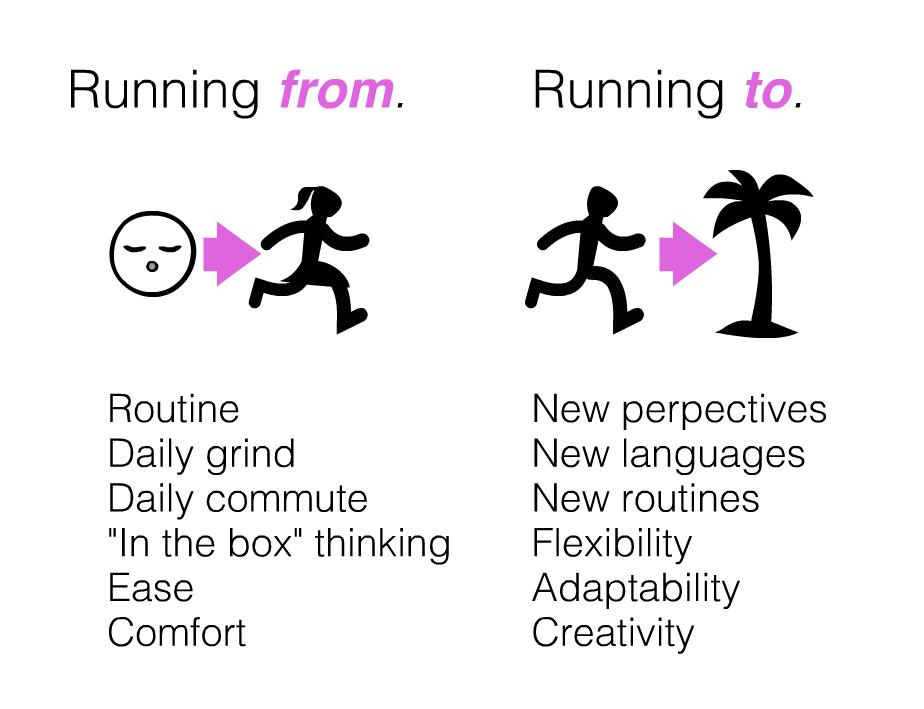
Knowing this, it’s clear why 93% of digital professionals feel more productive away from the physical office, and 82% report lower stress levels. 5
Remote workers are 20% more productive; some even report losing 3-4 hours per day of their most productive time with interruptions. 6

Interruptions also affect employee morale due to increased workload and lack of control over their schedules.7
Taking Workations Seriously
A Workcation business model case study: “Digital Nomads Madeira”: launched in 2021 on the beautiful Portuguese island to specifically attract the Northern European Workationer and backed by the Regional Government, “Startup Madeira” began as a pilot project.
Leadership Excellence presented by HR.com JUNE 2023 12 Submit Your Articles Workations: The Future Of Remote Work And Vacation Combined
After a year it was so successful that the project, now titled “the Nomad Village”, will be ramped up and extended until at least 2024 8 and other locationsPonta do Sol, Funchal, Machico, Porto Santo, Porto Moniz, Santa Cruz, Santana, will be added to the overall offering.
The ideas here are part of the Comic Books for Executives series written by Fiona Passantino. Get the books on Engagement and Communication at www.postcovidhandbook.com
Watch the VIDEOS
Listen to the PODCAST
Notes
1. Equalture, Localyze (2020) “Workation a beginning of a new post-covid era where remote work meets vacation”
https://resources.equalture.com/hubfs/Infographic%20 Workation%20Localyze%20x%20Equalture.pdf
2. Workation (2020) “Workation Facts & Figures”
https://workation.com/know-how/resources/ workation-facts-figures/
3. Equalture, Localyze (2020) “Workation a beginning of a new post-covid era where remote work meets vacation”
https://resources.equalture.com/hubfs/Infographic%20 Workation%20Localyze%20x%20Equalture.pdf
4. Cordeiro, M. B. H. (2019). How physical environment influence creativity: a sensory-based approach (Doctoral dissertation). https://run.unl.pt/bitstream/10362/69480/1/ Cordeiro_2019.pdf
5. Workation (2020) “Workation Facts & Figures” https://workation.com/know-how/resources/ workation-facts-figures/
6. Workation (2020) “Workation Facts & Figures”
https://workation.com/know-how/resources/ workation-facts-figures/
7. Brown, (2015) “The Hidden Costs Of Interruptions At Work”, Fast Company. https://www.fastcompany.com/3044667/ the-hidden-costs-of-interruptions-at-work
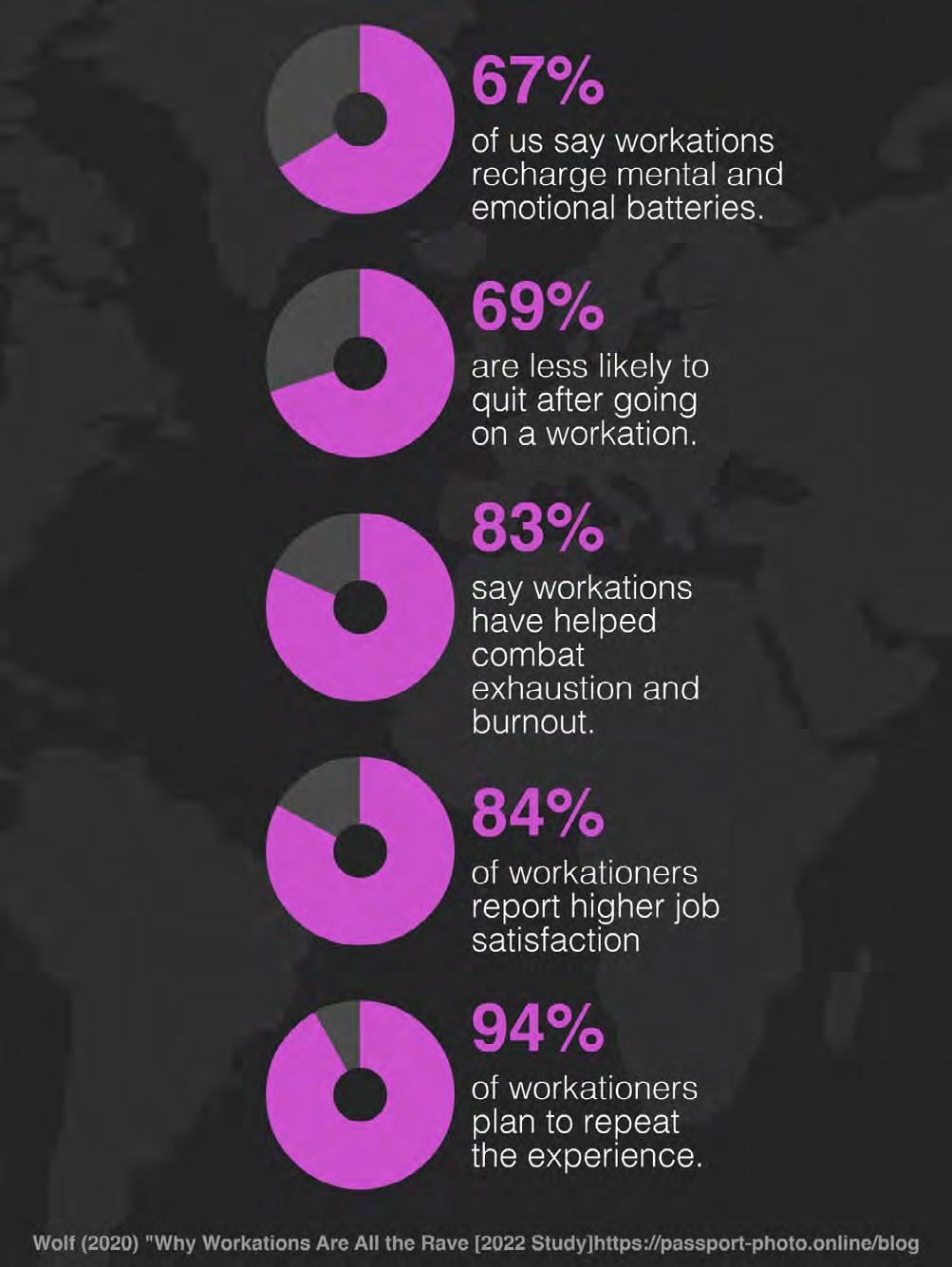
8. Digital Nomads Madeira Islands (2020) https://digitalnomads.startupmadeira.eu/about-us/
Fiona Passantino is an executive leadership coach, speaker and trainer, helping professionals engage with their teams and communities and increase their visibility and impact in complex, international organizations, working with groups or individuals. See Executive Storylines for more. Fiona is a speaker, trainer, podcaster blogger, YouTuber and the author of the Comic Books for Executives series. She recently has a weekly radio show on Den Haag 92 FM on the Future of Work.
Would you like to comment?

Leadership Excellence presented by HR.com JUNE 2023 13 Submit Your Articles
Workations: The Future Of Remote Work And Vacation Combined
New Data Reveals The Best Places To Be A Digital Nomad In 2023
Affordable, connected, and adventure-filled cities to work and explore
By Lucinda Pullinger, The Instant Group
There are already 35 million digital nomads worldwide, with the trend being driven by technology, growing demand for flexible workspace and the increasing adoption of hybrid work. Advances in technology, remote working, and workplace culture mean that by 2035, a billion people could live and work as digital nomads. According to predictions, this global nomadic workforce, capable of plugging in anywhere in the world with a decent internet connection, will make up 1 in every 3 employees.
The data team at Instant Offices has ranked almost 80 locations on affordability, weather, broadband speed, and more to reveal the best places to be a digital nomad in 2023.
What is a Digital Nomad?
A digital nomad is a remote worker who travels and works
simultaneously, visiting locations worldwide, and working from beaches, coffee shops, and coworking spaces. Some digital nomads only travel for a few months, and others do it for years. Research suggests that 80% of digital nomads prefer to stay in one location for 3-9 months.
Searches for “digital nomad” have increased by 143%!
Top Digital Nomad Locations Ranked
Below is our ranking of up to 80 of the best places to be a digital nomad in 2023, with Lisbon, Bangkok, Madrid, Seoul, and Delhi in the top five.
Locations that rank highest provide the ideal combination of cost-efficient living with beautiful weather, superb connectivity, and quality of life.
Outranking every other city analyzed, Lisbon is the perfect option for inexpensive, delicious food, beautiful weather and scenery, and excellent infrastructure.
One of the sunniest places in Europe, the Portuguese coastal capital is a food-lovers haven, with local markets and freshly caught seafood available on virtually every corner. With over 7,000 wifi hotspots, fast broadband, and excellent food and drink, the city is ideal for enjoying the sun and surfing while working.
Not far behind is Bangkok, offering stunning local cuisine, vibrant street-food markets, over 15,000 wifi hotspots, and some of the most affordable accommodations of all the cities researched. The average cost of an Airbnb in Bangkok is £43 a night.
Leadership Excellence presented by HR.com JUNE 2023 14 Submit Your Articles
TOP PICK
TOP 20 LOCATIONS FOR DIGITAL NOMADS

1. Lisbon, Portugal
2. Bangkok, Thailand
3. Madrid, Spain
4.
5.
6.
7.
8.
9.
Spotlight on Asia
10. Rotterdam, Netherlands
11. Gothenburg, Sweden
12. Vienna, Austria
13. Taipei, Taiwan
14. Mumbai, India
15. Kuala Lumpur, Malaysia
16. Perth, Australia
17. Hanoi, Vietnam
18. Barcelona, Spain
19. Athens, Greece
20. Tokyo, Japan
Unsurprisingly, over half the cities analyzed in our top 60 are in Asia. Cities like Seoul, Kuala Lumpur, Singapore, and Hong Kong offer captivating travel experiences, scenery, and food alongside stellar connectivity, infrastructure, and a manageable cost of living.
Leadership Excellence presented by HR.com JUNE 2023 15 Submit Your Articles New Data Reveals The Best Places To Be A Digital Nomad In 2023
Seoul, South Korea
Delhi, India
Dubai, UAE
Ho Chi Minh City, Vietnam
Jakarta, Indonesia
Kathmandu, Nepal
Bustling metropolises across Central, East, South, Southeast, and Western Asia are perfect for digital nomads who want to explore some of the world’s most iconic business centers and enjoy a continent full of exciting travel opportunities and sights. Demand for flexible office space in places like Singapore and Hong Kong is high as more people look to new ways of using the workspace, meaning you can easily find creative coworking spaces in Singapore, as well as meeting rooms and serviced offices to work from as you travel.
Connectivity is also second to none. Beijing boasts the fastest broadband speed of all the places analyzed, at 260mbps, with Hong Kong, Singapore, Shanghai, and Bangkok all in the top 10 for stellar connectivity. With the most wifi hotspots in the Asia-Pacific region, Jakarta has more than 97,000 for those who like to work on the go.
Neighboring countries in Asia-Pacific also feature high on the list for digital nomads, with Australia and New Zealand both offering plenty of coworking space, delicious cuisine, travel
opportunities and probably most appealing of all, unparalleled sunny weather.
Spotlight on Europe
According to almost 80 cities analyzed, Europe is one of the most popular destinations for digital nomads and the second most popular continent on the list. Rich history, excellent transport, and accessible travel opportunities make Europe one of the most appealing locations for digital nomads, who can spend a weekend sightseeing in Paris and catch a train back to London in time for work on Monday.
Leadership Excellence presented by HR.com JUNE 2023 16 Submit Your Articles
New Data Reveals The Best Places To Be A Digital Nomad In 2023
For those who want to soak up the Mediterranean climate, Lisbon and Thessaloniki are warm seaside cities with a gentle pace of life. Two cities with the highest quality of life globally include Vienna and Zurich, while Geneva also features in the top five, making Switzerland a highly desirable place to live and work.
Spotlight on the US
Jacksonville tops the list of best digital nomad cities in the US in 2023. This large, sunny metro offers great weather all year round with plenty of beach access, the highest quality lifestyle of all US cities analyzed, and access to world-class amenities.
Other US locations, like Houston, Chicago, LA and New York, are already popular tourist attractions, but their combination of flexible office space, connectivity, transport infrastructure, and travel options also make them appealing locations to live, work and play while exploring the US as a digital nomad.
What Jobs Do Digital Nomads Do?
Plenty of careers are amenable to a digital nomad lifestyle. 51% are in digital marketing, computer
science, and creative industries (copywriting and design), but this is only scratching the surface of the range of jobs occupied by remote workers. Anything that can be done behind a screen can be done by a digital nomad, whether that’s insurance brokering, nutritional advice, or HR.
Travel While You Work: A Trend That’s Here to Stay
Trends in commercial property reflect the general movement towards increased workplace flexibility. Our market forecasts show flexible workspace as a proportion of the total office market will grow from 5% to
almost 13% by 2025. As the role of the office changes and flexibility increases globally, more people will be able to travel and work virtually anywhere.
Discover a flexible workspace that suits your working style anywhere in the world.

Data method
We analyzed data from various reputable sources across nine categories to rank the best cities for digital nomads. We then assigned scores to the best-ranking cities for each category and summed up the scores to create a global list.
Lucinda Pullinger is the Managing Director UK at The Instant Group . She brings a breadth of industry experience including technology, outsourcing, energy, renewables and sport across both multi-national corporations and mid-size businesses. Lucinda sits at the cusp of people and workspace her current role sees her lead a team of talented experts as Managing Director of the UK region.
Would you like to comment?

Leadership Excellence presented by HR.com JUNE 2023 17 Submit Your Articles
New Data Reveals The Best Places To Be A Digital Nomad In 2023
HRCI® & SHRM® CERTIFICATION PREP COURSES
GROUP RATES AVAILABLE
For HR Professionals
Show that management values the importance of the HR function, and has a commitment to development and improvement of HR staff.
Ensure that each person in your HR department has a standard and consistent understanding of policies, procedures, and regulations.
Place your HR team in a certification program as a rewarding team building achievement.
For Your Organization
Certified HR professionals help companies avoid risk by understanding compliance, laws, and regulations to properly manage your workforce.
HR Professionals lead employee engagement and development programs saving the company money through lower turnover and greater productivity and engagement.
A skilled HR professional can track important KPIs for the organization to make a major impact on strategic decisions and objectives, including: succession planning, staffing, and forecasting.
HR.com/prepcourse CALL TODAY TO FIND OUT MORE 1.877.472.6648 ext. 3 | sales@hr.com
1 Less expensive than a masters or PhD program, and very manageable to prepare with
2. legislation and best practices
3. Recognized, Industry benchmark, held by 500,000+ HR Professionals
Group Rate Options
We offer group rates for teams of 5+ or more for our regularly scheduled PHR/SPHR/ SHRM or aPHR courses.
For groups of 12+, we can design a more customized experience that meets your overall length of the course.
Groups rates for HRCI exams are also available as an add-on.
All group purchases come with 1 year of HR Prime membership for each attendee to gain the tools and updates needed to stay informed and compliant

CALL TODAY TO FIND OUT MORE 1.877.472.6648 ext. 3 | sales@hr.com | HR.com/prepcourse
1 2 3
Driving Business Success Through Servant Leadership
Create a positive and collaborative work environment through servant leadership
By Khushman Hans, Chewy
Since the 1970s, when Robert K. Greenleaf first coined the term servant leadership, it has evolved as an effective model to drive measurable results by focusing on employees rather than the company. While the traditional leadership approach centers on strengthening a company’s position in the market, servant leaders prioritize the growth and well-being of their employees. As a result, they are uniquely equipped to improve their organizations and communities. The servant leadership approach enables companies to build a work culture where employees feel respected, appreciated, and valued, from the C-suite to individual contributors. So, how do corporations achieve greater success and improve profits in a challenging economic environment? They hire or develop servant leaders to lead their people with empathy, trust, collaboration, and respect.
How Servant Leadership Differs from Other Leadership Practices
The servant leadership approach shifts from enforcing the power of authority toward a more synergistic relationship based on serving and supporting others. Servant leaders put employees’ needs first, helping them to evolve and perform to their highest potential. This method creates an innovative and collaborative environment where employees are empowered, and teams thrive. Servant
leadership also develops leadership qualities. This leadership style requires leaders to show continuous empathy, listen, follow stewardship principles (caring for the team, organization, and society as a whole), and establish a strong commitment to the personal growth of others.
On the other hand, traditional business leaders believe in authority and hierarchy by giving orders to staff. They focus mainly on organizational goals and results and control the decision-making from the top down.
Servant leaders believe that when employees feel personally and professionally fulfilled, they can and will deliver long-term results. Servant leaders typically approach this by listening to team members’ concerns, finding meaningful solutions, offering employees the support required to achieve company goals, and mentoring employees for professional development to create a supportive and positive culture.
Benefits of Servant Leadership
Most of the United States (approximately 80 percent) is a service economy. Servant leadership can significantly benefit individual employees and help a company pursue its strategic plans and goals.
Leadership Excellence presented by HR.com JUNE 2023 20 Submit Your Articles
A servant-led organization will attain benefits including:
● Increased trust and autonomy across the organization as servant leaders lead by infusing trust among their staff.
● Improved customer satisfaction and loyalty as leaders and employees serve the organization above and beyond their needs.
● Higher employee engagement and productivity that occur as servant leaders focus on serving and supporting their team members, resulting in a positive and supportive work environment.
● Better employee retention and growth that come from servant leaders who lead effectively and foster transparency and collaboration.’
Bill Marriott, founder of Marriott International, instilled a culture of service at the center of his company. The motivation to serve moved the company to great success. “It’s always been a major belief of our company, take good care of your people, they’ll take good care of the customer, and the customer will come back,” Marriott said to Forbes in an interview. Marriott also believes that celebrating, training, teaching, and providing opportunities for all employees has been instrumental to the company’s success.
The Container Store is another company that has succeeded with a servant-leadership philosophy. CEO Kip Tindell believes that maximizing shareholder returns is not the only core business focus. He believes a flourishing community is critical to business success. According to Tindell, “We’re an employee-first culture. Yes, we love our customers, but we believe that if we put our employees first, then they’ll take better care of the customers.” This philosophy is supported by offering employees better wages and additional training opportunities.
The Core Principles of Servant Leadership
Servant leaders possess a natural desire to serve first and lead second. These unique individuals want to meet others’ needs to build their growth
and development. Servant leadership focuses on a shared vision, direction, and goals. Some of the core principles that define a servant leadership philosophy include
1. Listening skills: Servant leaders listen to employees’ views, ideas, and perspectives rather than delivering commands. When leaders listen, ideas are contributed freely, and mutual respect and understanding of different opinions will help organizations grow.
2. Persuasive power. A servant leader guides and influences a team toward a corporate vision, explains the best approach, and empowers employees to work together toward common goals.
3. Empathy. Servant leaders demonstrate support and understanding by showing they care enough to give someone else’s issue or perspective a high level of respect and attention.
4. Learning opportunities. Giving employees positive feedback regularly and providing ways to develop professionally increase skills and productivity.
5. Development of other leaders. Leaders who work hard to develop strong teams also recognize the importance of nurturing the new generation of leaders. Strong servant leaders produce a diverse group of leaders from different backgrounds.
6. Teamwork and employee participation. Servant leaders make their employees feel that their voices and thoughts are heard, respected, and valued. The servant leader shows appreciation for various views and opinions regarding the organization’s growth and success when a team is encouraged to collaborate and suggest new ideas to help improve the organization. Employee retention is higher by 50 percent under servant leadership
7. A trusting environment Trust is crucial in any organization. A leader builds a culture of trust by demonstrating the values employees must uphold and being transparent about the company’s vision and goals.
Leadership Excellence presented by HR.com JUNE 2023 21 Submit Your Articles
Driving Business Success Through Servant Leadership
What Behaviors Do People with This Mindset Exhibit?
1. Serving first and leading second
2. Empathy, selflessness, and humility
3. Listening skills
Overcoming Challenges
While the benefits of servant leadership are clear, there are several challenges servant leaders will need to overcome including:
1. Senior leadership needs to buy into the servant leadership approach To be successful, all organizational leaders must understand and accept the new vision of servant leadership.

Once buy-in is achieved, it’s easier to shift from a traditional leadership philosophy to a servant leadership culture.
2. A servant leadership approach may decrease the authority of leadership and management. When employees see a manager in more of a support role, they are less likely to view the manager as an authoritative figure. Servant leaders must work harder to evaluate employee challenges, empower and engage employees, and foster a strong company vision.

3. Retraining of executives and staff is required. To incorporate a servant leadership mentality, organizations need to spend time and money retraining personnel. The investment will pay off exponentially when leaders encourage employees to grow and develop professional and servant leadership skills.
Building a Future for Individuals and Organizations
When organizations build a culture of servant leadership, employee confidence, engagement, collaboration, growth, and creativity thrive. This culture of positivity and support extends to customers, suppliers, the community, and other stakeholders. Servant leadership offers a practical approach for companies to foster a culture of resilience and adaptability in a marketplace fraught with chaos and unpredictability. Positively impacting people and building a people-first business culture create a compounding effect in circles of influence.
Would you like to comment?
Leadership Excellence presented by HR.com JUNE 2023 22 Submit Your Articles
Khushman Hans is the Senior Director of Operations at Chewy. He has many years of experience leading operations across multiple fulfillment centers in North America, as well as experience in employee engagement, leadership development, and engineering.
Driving Business Success Through Servant Leadership
Are Digital Nomads The Road To The Future?
Here is why you need to pay attention to this growing trend
By Jason Richmond, Ideal Outcomes, Inc.
You’refamiliar with the images…an individual with a laptop sitting on a sun-kissed tropical beach…someone sipping a Cappuccino in a European sidewalk café…another person lounging on the deck of a cruise ship.
They’re so-called digital nomads unchained from a desk and working while traveling the globe.
It’s a trend that’s on the increase, even if the reality doesn’t always match up to the glossy pictures. And it follows the widespread acceptance of remote work (especially hybrid work).
But if someone is not only remote but on the move every few days, weeks, or months…what does that do for connectivity and productivity? Is it something that employers should accept, even welcome?
First, let’s be clear: it’s not for everyone. Not every individual can have the discipline to travel and perform effectively. Not every job is suitable.
Real-World Experience
Here’s a classic example of a digital nomad in practice that worked out well. Ten years ago—before it became fashionable—a writer friend named John wanted to continue working while he explored Europe. His main client, a mega-successful Silicon Valley entrepreneur, was open-minded and agreeable—as long as my friend continued to deliver quality work on time. John spent a few months in England, a few months in Italy
(mostly Florence), a few weeks in Prague, Barcelona, Dublin, and again a few months in England.
From the time zone standpoint, he was always eight or nine hours ahead of his client. He wrote first thing in the morning and emailed content so it was waiting for the client to review as soon as he started his workday in California. Meanwhile, John soaked up the cities where he was staying (often in an Airbnb) and during the extended stays lived like a local. Late afternoon or early evening he made contact with the client and did a few more hours’ work. If it meant an occasional midnight phone call—so what? It was a trade-off he found more than acceptable. One year later, the writer and client were both happy with the results.
My friend found inspiration from enjoying the change of pace and the change of cultures. He is not alone.
Positive Surveys
A report “The Digital Nomad Search Continues,” by job platform MBO Partners, found that 85% of digital nomads were “highly satisfied” with their work and lifestyle, and 54% planned to continue as digital nomads for at least the next two years.
A survey conducted by SafetyWing, a company that handles insurance for such workers, discovered that 93% reported higher levels of satisfaction, 90% improved productivity, 61% said their stress levels had gone down, and 44% claimed better quality of mental health.
Leadership Excellence presented by HR.com JUNE 2023 23 Submit Your Articles
TOP PICK
HR professionals need to bear all of this in mind as well as the fact that the kinds of people becoming digital nomads are not who you might imagine. Perhaps you think that it’s mostly younger single professionals, especially Generation Z? Not so. The MBO Partners survey found that 44% are Millennials, followed by Gen X at 23%, Gen Z at 21%, and Baby Boomers at 12%. The SafetyWing survey found that 58.8% were either married or in a partnership and 48.3% had children under the age of eighteen.

The kinds of roles fulfilled by digital nomads are much more likely to meet your expectations. According to MBO Partners they work in a variety of fields including information technology (19%); creative services (10%); education and training (9%); consulting, coaching, and research (8%); sales, marketing, and PR (8%), and finance and accounting 8%. The common denominator, of course, is that all of these roles can be performed online.
Digital nomads are not always on the go. A FlexJobs survey discovered that 73% traveled to just one or two countries, 19% visited three-to-four countries, and 8% went to more than five countries. In addition, 42% had been digital nomads for less than a year, 33% for one-to-five years, and 24% for more than five years. It’s a trend that’s growing.
Individual Benefits
Some individuals thrive when they’re able to experience a variety of cultures and environments. For those with the right kind of acumen, and discipline, there are tremendous advantages. They find it stimulating and productive. They say they have a better work-life balance. They appreciate the flexibility and the opportunity to expand their horizons by getting a better understanding of other cultures and making friends in other parts of the world. For them, it takes personal development to new heights.
Leadership Excellence presented by HR.com JUNE 2023 24 Submit Your Articles
Are Digital Nomads The Road To The Future?
Financially, they’re also happier. Some 79% report being very satisfied or satisfied with their earnings, possibly because they travel to places where the cost of living is lower—a practice that’s been dubbed “geo arbitrage.”
Personally, I’m at my best when I’m juggling travel to different places and not stagnant in one location. My clients are all across the U.S. and my entire team has always been remote. Travel keeps me constantly engaged.
Company Benefits
Organizations need to recognize that digital nomads are not only here to stay, but also likely to become a larger part of the workforce. It’s not a cause for concern. The benefits to companies include access to global talent and the potential to hire adventurous go-getting employees.


All the indications are that employee engagement is boosted and employee retention is improved.
Important Considerations
Many digital nomads, of course, are independent contractors but there are a surprising and increasing number of full-time employees. FlexJobs reports that more digital nomads are employed by a company (35%) than digital nomad freelancers (28%) or business owners (18%).
For employees on the move, HR needs to set up policies and procedures that require them to make the company aware of their current and projected residences to ensure compliance with local and international regulations including tax and insurance.
The very nature of being a digital nomad means a heavy reliance on technology. It’s essential therefore to make sure security is a high priority. Failsafe mechanisms like kill switches which curb unauthorized access should be considered in case a nomad’s laptop is lost or stolen.
Companies that embrace digital nomads are forward-thinking and likely to accrue benefits with a vibrant, talented workforce that’s engaged and likely to remain on board.
Would you like to comment?
Leadership Excellence presented by HR.com JUNE 2023 25 Submit Your Articles
Jason Richmond is the CEO and Chief Culture Officer at Ideal Outcomes, Inc.
Are Digital Nomads The Road To The Future?
Six Ways HR Can Build Workplace Trust
Why it’s important
By Jennie Yang, 15Five
Trustis foundational to every successful relationship. Workplace relationships are no exception, whether between employees, employees and their managers, or employees and leadership.
HR can lead the effort to cultivate a high-trust work environment that benefits everyone’s growth and success by identifying opportunities for relationship-building and leveraging measurement and methodology.
Building trust with your employees benefits your organization’s short- and long-term health, funneling a cascading positive effect to multiple areas in the workplace — increasing employee engagement and psychological safety; decreasing stress; and improving individual performance, organizational alignment, collaboration, and retention. The result is a more positive workplace culture — much needed in the hybrid and remote work era.
According to the Harvard Business Review, employees at high-trust companies report 106% more energy at work, 76% more engagement, 74% less stress, 50% higher productivity, 40% less burnout, 29% more satisfaction with their lives, and 13% fewer sick days.
When trust is cultivated and sustained, it can strengthen manager-employee relationships, which in turn supports strategic HR outcomes like improved employee engagement and performance. . On the flip side, in the absence of trust, manager-employee relations often suffer, negatively impacting goals like lowering regrettable turnover.
Here are six ways that HR leaders can foster a high-trust work environment.
Measure Employee Trust
A great place to start is to lean into existing methods for gathering employee feedback and measuring employee engagement. An easy get is to include trust-related questions in weekly check-ins or employee engagement surveys. This can be as simple as using a rating scale to assess how employees agree or disagree with statements like, “I trust the other people on my team” or “I trust my manager.”
The answers can provide valuable insight into your organization’s trust levels and enable HR to leverage the responses to make improvements and track changes over time. Plus, survey results from teams and managers can help pinpoint which need additional guidance or support.
Advocate for Goal Transparency
Prioritizing goal alignment and transparency can play a significant role in improving trust in the workplace. In his research on team conflict at General Electric, Noel Tichy found that unclear or misaligned goals caused over 90% of team conflicts.
Additional research from MIT Sloan acknowledges that only 28% of executives and middle managers responsible for executing strategy could list three company strategic priorities.
Leadership Excellence presented by HR.com JUNE 2023 26 Submit Your Articles
Implement a universal goal-setting methodology such as OKRs (Objectives and Key Results) that gives every manager and individual contributor a view of objectives at all levels of the organization and how they are connected. The transparency achieved eliminates ambiguity and confusion and ensures everyone understands what they are working toward. This knowledge is empowering, increasing trust and motivation among your employees to follow through on those objectives.
Build Feedback Loops
Establish consistent feedback processes that provide opportunities for constructive feedback and growth. An annual performance review is inadequate for improving performance or trust — there needs to be consistent, operationalized touchpoints to exchange feedback throughout the year.
Encourage regular touchpoints between managers and employees, that are supported by software tools like weekly check-ins and one-on-one meeting agendas. These check-ins can include questions about the employee’s progress on their priorities and more personal/wellness-focused questions, such as, “Is there anything you are worried about or anything I can help you with?”
Then go one step better. Ensure that managers are having regular “face-to-face” conversations with their direct reports, either in-person or virtually. These touchpoints facilitate real-time conversations, where employees and managers have unedited dialogue that is authentic and sometimes vulnerable. A feedback conversation to move progress forward then has the added benefit of strengthening the manager-employee relationship.
Create Space for Recognition and Gratitude
As an HR leader, you are essential in cultivating a culture of gratitude in your organization and creating a workplace where all employees feel valued, respected, and appreciated.
Research shows that a bit of appreciation can go a long way in the workplace — 81% of employees report that they are more motivated to work hard when their boss shows appreciation for them, and 53% of employees said that receiving more appreciation from their manager would make them want to stay longer at the company.
Historically, HR leaders have relied on the hope that their managers are vocally recognizing their employees’ accomplishments or writing them thank-you notes — methods that are hard to track.
But technology can now give HR visibility when an employee is recognized for a job well done. Employee recognition software — especially one that enables employees to give each other public “shoutouts” — can promote employee appreciation and gratitude as a core part of the company culture in an operationalized, trackable, and scalable way. It also helps to hold managers accountable for building an authentic culture of recognition gratitude, and increased trust.
Foster Diversity, Inclusion, Equality, and Belonging
Promoting DEIB goes together with maximizing trust in the workplace, as it helps to create an environment where all employees feel safe, supported, valued, and respected.
HR must pave the way by implementing policies and processes demonstrating that the company values and welcomes diversity, like ensuring that recruitment and hiring are focused on diverse candidates, people are paid fairly, promoted equitably, and given equitable opportunities to succeed.
This will establish a baseline level of trust that the workplace is a safe, welcoming environment for all employees and that all employees are valued and treated with respect, regardless of their background, age, identity, or ability. Leaders must also address challenges of existing exclusion, inequity, and discrimination within the organization.
Leadership Excellence presented by HR.com JUNE 2023 27 Submit Your Articles
Six Ways HR Can Build Workplace Trust
HR must do more than set the tone. Managers are crucial in creating and leading inclusive teams where psychological safety is high, collaboration is the norm, and innovation can thrive. So much of HR’s ability to move the needle on trust in the workplace relies on the day-to-day interactions that managers have with their teams and the level of priority that managers put on creating trust and safety for their teams.
Train Managers/Leaders to Build Trust
HR leaders should invest in leadership training and development programs to equip managers with the skills and coaching necessary to foster trust. Training programs can cover topics like building
strong relationships and implementing trust-building strategies. This investment can lead to employees and managers establishing new and more dynamic communication cadences, boosting trust between managers and employees, and helping teams stay focused, motivated, and more aligned with company goals.

Building trust can feel like an abstract concept, but HR leaders can significantly boost its practice in the workplace. By implementing proven processes and structures to foster trust, HR can improve employee engagement, performance, retention, and manager effectiveness and help create a more successful workplace for everyone.
Jennie Yang believes that when leaders create the conditions for inclusive and psychologically safe work environments, team members feel seen, heard, and valued and perform the best work of their lives. As VP of People & Culture at 15Five, she provides strategic counsel on organizational effectiveness, talent strategy and development, and change management. Jennie is a strategic and operational consulting leader with over 12 years of experience designing business strategies and driving organizational transformations for Fortune 500 companies. Jennie is a certified Master Practitioner in Transformational Neuro-Linguistic Programming (tNLP), and a leadership coach and facilitator who helps unlock the potential of individuals, teams, and organizations.
Would you like to comment?

Leadership Excellence presented by HR.com JUNE 2023 28 Submit Your Articles
Six Ways HR Can Build Workplace Trust
Digital Nomadism In The Workplace: Top Insights From HR Leaders On Policies And Perspectives

Unleashing the power of location independence
By Brett Farmiloe, Terkel.io
To gain insight into how companies are handling the growing trend of digital nomadism, we asked HR leaders about their policies and whether they encourage this lifestyle. From facing challenges in payroll to focusing only on the results rather than where employees are located, here are the top eight perspectives shared by CEOs, HR managers, and founders on their company’s approach to digital nomad employees.
● Pulling Back Because of Payroll Challenges
● Considering Digital Nomadism as a Perk
● Promoting Work-Life Balance and Productivity
● Varying Policies From Different Companies
● Boosting Retention With a Flexible Work Policy
● Embracing the Potential of a Dispersed Workforce
● Limiting Moves to Reduce Administrative Workload
● Focusing On Results in a Fully Remote Company
Leadership Excellence presented by HR.com JUNE 2023 29 Submit Your Articles
TOP PICK
Brett Ungashick, CEO and CHRO, OutSail

Pulling Back Because of Payroll Challenges
We are pulling back on our company’s digital nomad policy because it is creating a lot of headaches for our payroll and tax team. We can’t rely on our payroll vendor to continue to manage the state and local tax registration process, and since that has become an internal task, each time an employee moves to a new state, it adds 10-15 hours of admin time.
Considering Digital Nomadism as a Perk
We have a fully remote workforce, and our founders are actually digital nomads themselves, so naturally, we allow employees to embrace wandering instead of setting up a home base in a specific city, should they choose to do so.
It is worthwhile for organizations to consider flexibility in this area because it can function as a perk at very little expense to the company. Companies rarely have to spend any budget making this allowance, yet it can yield a glorious return in staff morale and output, as employees are grateful for the freedom.
Before encouraging digital nomadism, however, companies should field certain considerations, for example, navigating asynchronous schedules and potential productivity hurdles by requiring some mandatory online times, and educating employees to alert HR if shifting states or working internationally to prevent unexpected tax issues.

Leadership Excellence presented by HR.com JUNE 2023 30 Submit Your Articles Digital Nomadism In The Workplace: Top Insights From HR Leaders On Policies And Perspectives
Grace He, People and Culture Director, TeamBuilding
Brittney Simpson, HR Operations Manager, Walker-Miller Energy Services


Varying Policies From Different Companies
I’ve worked in environments that allowed digital nomad employees and those that did not. From those experiences, broadly, I can share that companies have different policies for digital nomad employees.

Some companies like it because it can attract top talent, save costs, and increase productivity. However, there are also potential challenges, such as communication difficulties, security risks, and cultural differences.
Whether a company encourages digital nomads depends on many factors, such as the work and the organization’s culture and values.
Boosting Retention With a Flexible Work Policy
Working in the office was pre-COVID, working from home was mid-COVID, and in our post-COVID world, the ideal policy is “work from anywhere.” Working from anywhere offers unparalleled flexibility, enabling employees to choose the working environment best suited to them.
It also allows employees to try digital nomadism, and many staff members do. Of these employees, the overwhelming majority continue to be productive throughout their travels and appreciate the flexibility offered by the organization.
Although this presents challenges for both employees and employers, the improved work-life balance more than justifies this policy. Employee attrition has plummeted, helping us to keep key members of staff.
Leadership Excellence presented by HR.com JUNE 2023 31 Submit Your Articles
Digital Nomadism In The Workplace: Top Insights From HR Leaders On Policies And Perspectives
Chloe Yarwood, HR Manager, Test Partnership
Embracing the Potential of a Dispersed Workforce
As a recruiter in the tech sphere, I’m always looking for ways to work with trends, not against them. When I have an employee looking to leave the area for an extended period, I try to consider the opportunistic possibilities.
For example, I’m looking to see if there may be a source in the area the employee could reach out to, or a client that I might land with a meet-and-greet.
Increasingly, my business is going global, so having workers around the world can benefit me if I stay open-minded to the potential of a dispersed workforce. In fact, I recently made a connection via a traveling employee I wouldn’t have otherwise, so I would advise companies against a knee-jerk disavowal of nomadic workers.


Limiting Moves to Reduce Administrative Workload
In order to attract top talent, we encourage the hiring and upward mobility of digital nomads. However, as remote work has become more prevalent over the past few years, it has also created more headaches for our HR team, especially from a tax perspective.

As our remote employees moved more often, it created far too many nexus connections and tax obligations for our organization in other states. To put it simply, it became a logistical nightmare.
We recently instituted a new policy that our nomad employees cannot move over three times in a calendar year. We established this policy in order to reduce the amount of nexus-related administrative work for our HR and tax teams.
Leadership Excellence presented by HR.com JUNE 2023 32 Submit Your Articles
Tim Walsh, Founder, Vetted
Digital Nomadism In The Workplace: Top Insights From HR Leaders On Policies And Perspectives
Janelle Owens, HR Director, Guide2Fluency
Gordana Sretenovic, Co-founder, Workello

Focusing On Results in a Fully Remote Company
As a fully remote company, we absolutely encourage digital nomads. Our leadership team lives a nomadic lifestyle, and our results never suffered. The reason for this is our diligent use of sprints and commitment to asynchronous work.
With the systems we have in place, we don’t need to be in the same time zone with any of our team members, as long as the work is done on time.
Our digital nomads get the same benefits as the rest of the team (PTO, private health insurance, etc.), and we rarely distinguish between them and the “local” team. As a fully remote startup, we hire people from all over the world, so location does not matter to us— only results.
Steven Mostyn, Chief HR Officer, Management.org
Promoting Work-Life Balance and Productivity
We encourage living a digital nomadic lifestyle in our company. We believe that quality work is not found only inside the four corners of an office. The more employees feel comfortable, the more they will be productive.
That is why we encourage digital nomadism—because it allows them to work where they feel most comfortable and productive. Digital nomadism also enables them to pursue a real “work-life balance” as they get to enjoy “life” the minute they go offline after working hours. We impose metrics, though, to measure their productivity and ensure that they are covering all of their tasks.
Brett Farmiloe is the Founder/CEO and currently the CHRO of Terkel.io

Would you like to comment?

Leadership Excellence presented by HR.com JUNE 2023 33 Submit Your Articles
Digital Nomadism In The Workplace: Top Insights From HR Leaders On Policies And Perspectives
How Leaders Kill Employee Trustworthiness
Unveiling the connection between trustworthiness and trust in the workplace
By Yoram Solomon, Ph.D., Innovation Culture Institute™ LLC
Leadersdon’t mean to kill trustworthiness, but they often do.
How do you react when one of your employees says they had tried something without your permission and failed? Do you say, “Next time, ask first?” or maybe, Don’t do that again,” or even, “This will show up in your annual performance review?” When you do that, you force your employees to lower their trustworthiness, and here is why.
Trust is reciprocal, but not the way you think it is. It’s not that if you trust me, then I will trust you. That doesn’t work because trustworthiness and trust are considered separately and are thus asymmetrical. It’s not only that if I behave in a trustworthy way, you will trust me. If you trust me and show me that you trust
me, then I will act in a trustworthy manner.
Can you imagine knowing another person trusts you but feeling that you haven’t earned that trust? Due to cognitive dissonance, you will start behaving in a more trustworthy way to justify the trust placed in you.
Unfortunately, the opposite is true too. If you don’t trust me and show me that you don’t trust me, I will behave in a less trustworthy way. At some point, I will give up. There are four possible levels:
● You don’t trust me and show me that you don’t. I have no illusions and will behave in an untrustworthy way because there is no point in acting in a
trustworthy way just to be distrusted.
● You don’t trust me, but you don’t show me that you don’t trust me. I might be under the illusion that you do trust me and I will behave in a somewhat trustworthy way.
● You trust me, but you don’t show me that you trust me. I might not know that you trust me, and I might behave at the same level of trustworthiness as if you didn’t.
● You trust me, and you show me that you trust me. That’s the best possible way to cause me to behave in a trustworthy manner, to earn the trust you have in me, and avoid the cognitive dissonance if I don’t.
Leadership Excellence presented by HR.com JUNE 2023 34 Submit Your Articles
In one of my surveys, I found that when asked, “What is the most important quality for you in other people?” 61.2% of the respondents chose “trustworthiness.” But I asked about six types of relationships, and trustworthiness was identified as the most important quality only in five of them. When I asked leaders about their employees, the top response was “the willingness to work hard,” with 47.5%. Trustworthiness was the most important quality for leaders in their employees only 39.3% of the time. And if leaders don’t want their employees’ most important quality to be trustworthiness, it could only mean one thing—they don’t plan to trust them.
Furthermore, while employees ranked their leaders’ trustworthiness as the most essential quality 60% of the time (more than the following four qualities combined), they rated their leaders’ “willingness to take risk” more than any other relationship
(20%, compared to an average of 6.1%). What is it that employees want their leader to take a risk on? On them! The employees!
If you want to increase trustworthiness, you must start with trust. But how?


Leadership Excellence presented by HR.com JUNE 2023 35 Submit Your Articles
How Leaders Kill Employee Trustworthiness
Assume a hypothetical situation in which your employee’s trustworthiness level of 50%. Unfortunately, most leaders will extend less than 50% trust to that employee. As a result, the employee will reduce their trustworthiness (what’s the point in keeping it up if it doesn’t yield trust?). At the same time, the leader, noticing that the employee deserves “some” trust, will start extending a little. Theoretically, the two will meet at a 25% level of trust and trustworthiness. While more than the level of trust the leader extended at the beginning, it is still lower than the trustworthiness the employee started with.

The other extreme is for the leader to extend 100% trust to the employee, regardless of the employee’s trustworthiness. Eventually, those two lines would theoretically meet at about 75%. While the leader realizes that the employee is not 100% trustworthy, the level of employee trustworthiness has increased significantly. However, the latter is dangerous. Trusting people more than they should can put you or your career in danger. Trusting people means that you give them control over something, hoping for them to minimize the negative
consequences of getting that control. You are in danger if they cannot be trusted with that control. Furthermore, the bigger the gap between the level of trust you put in someone and the level of trust they deserve, the bigger the disappointment or even betrayal you would feel when they are less trustworthy than the level of trust you attributed to them. Since we respond much stronger to negative experiences than to positive experiences, this might lead to an irrecoverable break of trust.
Leadership Excellence presented by HR.com JUNE 2023 36 Submit Your Articles
How Leaders Kill Employee Trustworthiness
cycle of helping them increase their trustworthiness by sensing that you trust them more. And

when their trustworthiness increases, trust them a little more.

And most importantly—show them that you trust them. Make sure they know it.
Would you like to comment?
Leadership Excellence presented by HR.com JUNE 2023 37 Submit Your Articles
The solution is to trust people a little more than you think they should be trusted. You start the
Yoram Solomon , Ph.D., MBA, LLB, is the author of The Book of Trust®, host of The Trust Show podcast, founder of the Innovation Culture Institute™ LLC , and facilitator of the Trust Habits™ workshop. He is a regular speaker at SHRM events.
How Leaders Kill Employee Trustworthiness

ePublication EditorialCalendar2023 Checkoutthenewandupcomingthemed HRtopicsinLeadershipExcellence Check ePublications Editorial Calendar Here. Would you like to submit an article? | Write to us at ePubEditors@hr.com Submission Guidelines 1 The Rise of OKRs and Goal Alignment and Holding Leaders Accountable Jul 2023 2 Developing First-Time Managers Aug 2023 3 Innovation in the Workforce Sep 2023 4 Leading and Managing a Multi-generational Workforce Oct 2023 5 Building Trust in the Workplace Nov 2023
The State of High-volume and Hourly Hiring June 20, 2023 Transform Hiring with the Greatest Overlooked Tool June 20, 2023 12:00 PM - 1:00 PM ET REGISTER Compliance Can Be an Advantage June 22, 2023 1:00 PM - 2:00 PM ET REGISTER Navigating Future of Learning: Innovations in Customer Education & Employee Development for Growth June 21, 2023 12:00 PM - 1:00 PM ET REGISTER Engaging Frontline Workers through Operational Communications to Drive Organizational EX Maturity June 28, 2023 12:00 PM - 1:00 PM ET REGISTER VIRTUAL EVENTS & HR.COM WEBCASTS UPCOMING www.hr.com/upcoming_webcasts www.hr.com/virtualconferences View our Upcoming Webcasts Schedule and Register Today! View our Upcoming Virtual Conference Schedule and Register Today! WEBCASTS WEBCASTS VIRTUAL EVENTS REGISTER The Future of Learning Technologies June 21, 2023 REGISTER
Thank you for partnering with us!
Circa provides OFCCP compliance management and recruiting technology solutions to deliver qualified candidates on a level, equitable playing field for organizations.


Designing better ways to work by providing cutting-edge products and exceptional experiences within HR, Talent, Time Management, Benefits and Payroll.

LEARN MORE
THANK YOU PARTNER WITH US
LEARN MORE



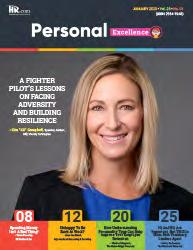







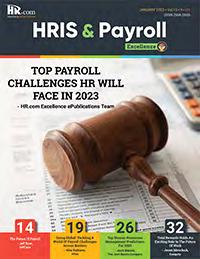
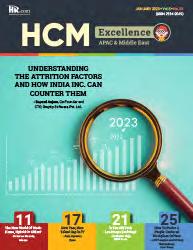
Publications 13 Targeted Publications to Reach Your Audience Informing, Educating, Enlightening and Assisting HR professionals in their personal and professional development, the Excellence series offers high-quality content through the publications! Like to submit an article? Use our online submission form or for more information go to www.hr.com/ExcellencePublications

For more information: Phone: 1.877.472.6648 | Email: ePubeditors@hr.com | www.HR.com/epubs Leadership Excellence June 2023






 Debbie Mcgrath Publisher, HR.com
Babitha Balakrishnan Editor, Leadership Excellence
Debbie Mcgrath Publisher, HR.com
Babitha Balakrishnan Editor, Leadership Excellence








 Julie Winkle
Julie Winkle































































